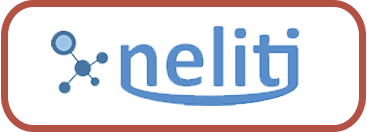EXAMINING PEURATEB ANEUK TEXT AS A MODEL FOR THE RELIGIOUS CHARACTER BUILDING IN EARLY CHILDHOOD
Abstract
Abstract: The conduct of children is becoming more negative, and it is difficult for parents to identify the best educational model. The Aceh community possesses a peurateb aneuk text passed down through centuries. The text is assumed to contain character values that benefit the children. Therefore, this study examined the peurateb aneuk text as a comprehensive model of early childhood religious character building. It explains the character education model in the text and shows the conditions of the context. Furthermore, it interpreted language to obtain a model of the formation of early childhood religious character from the text. The result reported the character education model of godliness and aqidah from the peurateb aneuk text. These variables were instilled with the internalization model of tawhid sentences that parents interpret when putting children to sleep by chanting the peurateb aneuk poem. The chant became an intermediate medium for instilling character values in early childhood. Meanwhile, La ilaaha illallah is a tawhid phrase for Muslims with a high religious level used as a model in the cultivation of godliness and aqidah character in children from an early age. The peurateb aneuk activity becomes a madrasah for children to learn tawhid and aqidah.
Keywords: Character Values, Peurateb Aneuk Text, Religious Education, Early Childhood
Full Text:
PDFReferences
Amoah, Anthony, and Moses Kumi Asamoah. “Child Survival: The Role of a Mother’s Education.” Heliyon 8, no. 11 (November 2022): e11403. https://linkinghub.elsevier.com/retrieve/pii/S2405844022026913.
Asnelida, Cut, Yusri Yusuf, and & Armia. “Tradisi Lisan Aceh Di Kecamatan Manggeng Kabupaten Aceh Barat Daya.” Jurnal Ilmiah Mahasiswa Jurusan PBSI 2, no. 3 (2017): 326–337.
Audina, F, T Permadi, and N S Idris. “Kajian Sastra Lisan Sinandong Adat Melayu Kota Tanjungbalai, Sumatra Utara.” Seminar Internasional Riksa … (2019): 1807–1820. http://proceedings2.upi.edu/index.php/riksabahasa/article/view/107.
Buto, Z, Muhajir Muhajir, Ar Razi, and M Iqbal. “Rethinking The Theology Text Of Islam In Nusantara: Serat Cebolek, Meurukon, Rabbani Wahid Poem, And Peurateb Aneuk.” In Proceedings of the Proceedings of the 19th Annual International Conference on Islamic Studies, AICIS 2019, 1-4 October 2019, Jakarta, Indonesia. EAI, 2020. http://eudl.eu/doi/10.4108/eai.1-10-2019.2291704.
Cahyo, Edo Dwi. “Pendidikan Karakter Guna Menanggulangi Dekadensi Moral Yang Terjadi Pada Siswa Sekolah Dasar.” EduHumaniora | Jurnal Pendidikan Dasar Kampus Cibiru 9, no. 1 (2017): 16.
Chang, Heesun. “The Longitudinal Transition of the Moral Character Latent Profile of Elementary School Students and Predictive Factor Verification in Korea.” Acta Psychologica 230 (October 2022): 103710. https://linkinghub.elsevier.com/retrieve/pii/S0001691822002256.
Fitria, Rini. “Memahami Hermeneutika Dalam Mengkaji Teks.” Syiar 16, no. 2 (2016): 33–42.
Harun, Mohammad. “Revitalisasi Nilai Etos Kerja Dalam Hadih Maja Sebagai Bahan Ajar Pendidikan Karakter.” Journal of Educational Science and Technology (EST) 1, no. 3 (December 14, 2015). http://ojs.unm.ac.id/index.php/JEST/article/view/1824.
Hestiyana, NFN. “Fungsi Tradisi Lisan Susurungan Bagi Masyarakat Banjar Hulu.” Mabasan 9, no. 2 (2019): 87–98.
Hurgronje, Snouek. Aceh Di Mata Kolonial. Jakarta: Yayasan Soko Guru, 1985.
Iqbal, Muhammad. “Existence of Acehnese Expression in Culture of Indonesian Speech Community.” Journal of Applied Studies in Language 1, no. 1 (2017): 72.
Iqbal Muhammad. “Meliterasikan Kembali Syair Peuratéb Aneuk.” Aceh.tribunnews.com (2019): 2–5. https://aceh.tribunnews.com/2019/11/03/meliterasikan-kembali-syair-peuratb-aneuk.
John W. Creswell. Research Design Qualitative, Quantitative, and Mixed Methods Approaches. London: SAGE Publications Ltd, 2014.
Kusumasari, Bevaola, and Quamrul Alam. “Local Wisdom‐based Disaster Recovery Model in Indonesia.” Disaster Prevention and Management: An International Journal 21, no. 3 (June 22, 2012): 351–369. https://www.emerald.com/insight/content/doi/10.1108/09653561211234525/full/html.
Kuzu, Fettah. “Training through Poetry within the Sample of Nabi’s ‘Hayriyye.’” Procedia - Social and Behavioral Sciences 9 (2010): 1030–1035. https://linkinghub.elsevier.com/retrieve/pii/S1877042810023864.
Lamhot Basani Sihombing. “Lamhot Basani Sihombing Adalah Dosen Jurusan Sendratasik, Fakultas Bahasa Dan Seni, Universitas Negeri Medan” (2009): 40–49.
Nasir, Muhammad. “Syariat Islam Dan Ngangkang Style : Mengenal Kearifan Lokal Dan Identitas Perempuan Aceh.” Miqot XXXVII, no. 1 (2013): 198–213.
Noortyani, Rusma, Mutiani Mutiani, Syaharuddin Syaharuddin, Jumriani Jumriani, and Ersis Warmansyah Abbas. “Penguatan Perkembangan Anak Melalui Alunan Lagu Pengantar Tidur ‘Dindang Banjar.’” Khazanah: Jurnal Studi Islam dan Humaniora 19, no. 1 (2021): 105.
Nursaptini, Arif Widodo, and Muhammad Sobri. “School and Community Synergy in Building the Character of Children.” In Proceedings of the 4th International Conference on Learning Innovation and Quality Education, 1–3. New York, NY, USA: ACM, 2020. https://dl.acm.org/doi/10.1145/3452144.3452235.
Patterson, Emma. “Oral Transmission: A Marriage of Music, Language, Tradition, and Culture.” Musical Offerings 6, no. 1 (2015): 35–47. http://digitalcommons.cedarville.edu/musicalofferings/vol6/iss1/2/.
Rahmah, St. “Perkembangan, Fungsi Dan Pengaruh Nyanyian Kelonan Pada Anak (Kajian Psikologi Sastra).” Jurnal Multilingual 13 (2014): 145–156.
Rickert, Marie. “Singing in Semiotic Assemblages. Pre-Schoolers’ Use of Songs in Interaction.” Learning, Culture and Social Interaction 32 (February 2022): 100600. https://linkinghub.elsevier.com/retrieve/pii/S2210656122000010.
Rospocher, Marco. “Explicit Song Lyrics Detection with Subword-Enriched Word Embeddings.” Expert Systems with Applications 163 (January 2021): 113749. https://linkinghub.elsevier.com/retrieve/pii/S095741742030573X.
Setiawan, Risky. “The Influence of Income, Experience, and Academic Qualification on the Early Childhood Education Teachers’ Creativity in Semarang, Indonesia.” International Journal of Instruction 10, no. 4 (October 25, 2017): 39–50. http://www.e-iji.net/dosyalar/iji_2017_4_3.pdf.
Unstad, Lars, and Henning Fjørtoft. “Texts, Readers, and Positions: Developing a Conceptual Tool for Teaching Disciplinary Reading in Religious Education.” Learning and Instruction 73 (June 2021): 101431. https://linkinghub.elsevier.com/retrieve/pii/S095947522030726X.
Warto, ., and Bahtiar Mohamad. “The Relationship Between Jipang and Pajang in the Oral Tradition: Between History and Memory.” Advanced Science Letters 22, no. 12 (December 1, 2016): 4426–4430. http://www.ingentaconnect.com/content/10.1166/asl.2016.8174.
DOI: http://dx.doi.org/10.30821/jcims.v6i2.12834
Refbacks
- There are currently no refbacks.
Jl. Williem Iskandar Psr V, Medan Estate, Medan, North Sumatra, Indonesia, 20371, Telp. (061) 6615683-6622925
Email: jcims@uinsu.ac.id

Journal of Contemporary Islam and Muslim Societies [ISSN 2528-6110 (print) | ISSN 2528-7435 (online)] is published by the UINSU Press, Universitas Islam Negeri Sumatera Utara Medan.
Journal of Contemporary Islam and Muslim Societies by http://jurnal.uinsu.ac.id/index.php/JCIMS/index is licensed under a Creative Commons Attribution-ShareAlike 4.0 International License.
Copyright �2023 Universitas Islam Negeri Sumatera Utara Medan. Powered by Public Knowledge Project OJS.


11.png)












